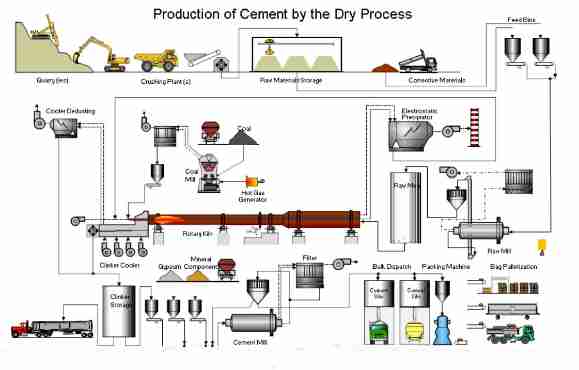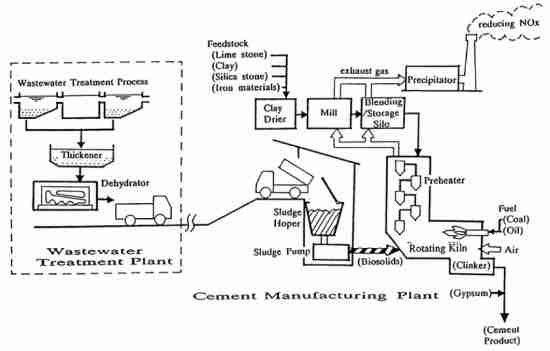04 Jan,2016 UTC+8 Views:
Portland cement is the basic ingredient of concrete. Concrete is formed when portland cement creates a paste with water that binds with sand and rock to harden.
Cement is manufactured through a closely controlled chemical combination of calcium, silicon, aluminum, iron and other ingredients.The most common way to manufacture Portland cement is through a dry method. Great wall can provide you the new type dry process cement plant.

Most of the raw materials, like limestone, clay, iron ores, and coal, should be crushed before their prehomogenization. Limestone is the primary material in this line, and due to its large particle size and high hardness, it’s good crushing plays an important role in the whole line. Special stacking and reclaiming technology has been used in the pre-homogenizing process so that raw materials can be better primarily homogenized.
Since the raw meal grinding work takes up more than 30% labor force in the whole dry process cement production line, it is quite important to choose appropriate grinding equipment and technological process so that high-quality products can be obtained.
The raw meal homogenization is a key factor for stable clinker calcination.
The preheater is used to preheat as well as decompose raw meal. So the length of the rotary kiln is effectively shortened. And the raw meal can fully exchange heat with the hot gases from the kiln. Because of its rapid and high-efficiency heat transfer, the production efficiency and heat consumption of this production line are greatly improved.
After its preheating and pre-decomposing, the raw meal will be calcined in the rotary kiln, where the generated carbonate will be further decomposed. Meanwhile, a series of solid phase reactions will take place.
As the last process, the cement grinding will consume a great deal of electricity. And in this process, special size granule cement will be obtained.
The cement can be transported in bulk or in bags.
The manufacture of cement is a very carefully regulated process comprising the following stages:
2.1. Quarrying - a mixture of limestone and clay.
2.2. Grinding - the limestone and clay with water to form slurry.
2.3. Burning - the slurry to a very high temperature in a kiln, to produce clinker.
2.4. Grinding - the clinker with about 5% gypsum to make cement.

The limestone and clay occur together in our quarries at Cape Foul wind. It is necessary to drill and blast these materials before they are loaded in 70t capacity trucks.
The quarry trucks deliver the raw materials to the crusher where the rock is crushed to smaller than 100mm (4 inches). The raw materials are then stored ready for use.
Raw materials preparation
About 80% limestone and 20% clay are ground in ball mills with water, producing very fine, thin, paste called slurry. The chemical composition of the slurry is very carefully controlled by adjusting the relative amount of limestone and clay being used.
The slurry is stored in large basins ready for use.
Clinker burning
The slurry is fed into the upper end of a rotary kiln, while at the lower end of the kiln, a very intense flame is maintained by blowing in finely ground coal. The slurry slowly moves down the kiln and is dried and heated until it reaches a temperature of almost 1500 degrees Celsius producing "clinker". This temperature completely changes the limestone and clay to produce new minerals which have the property of reacting with water to form a cementations binder. The hot clinker is used to preheat the air for burning the coal, and the cooled clinker is stored ready for use.
Cement milling
The clinker is finely ground with about 5% gypsum in another ball mill, producing cement. (The gypsum regulates the early setting characteristic of cement). The finished cement is stored in silos then carted to our wharf or packing plant facilities.
Some Facts and Figures
The mills for grinding the raw materials are 2.4m in diameter and 11.0m long and are driven by 720kw (1000HP) electric motors producing 45t/h of slurry. The cement is ground in two mills: one 2.4m x 11.0m long producing 18t/h of cement; the other 3.8m x 11.4m, powered by 2300kw (3000 HP) electric motor and producing 60 t/h of cement. The kilns are either 98m or 110m long, and produce up to 25 t/h of clinker.